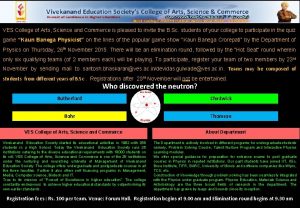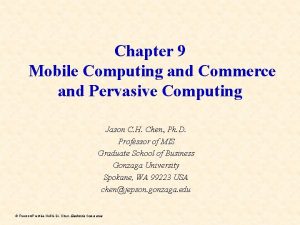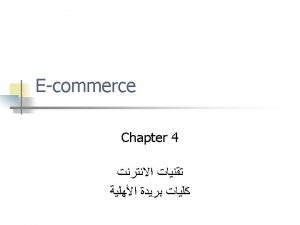M S COLLEGE OF ARTS SCIENCE COMMERCE OVERVIEW








- Slides: 8

M. S. COLLEGE OF ARTS SCIENCE & COMMERCE OVERVIEW OF INDIAN SOCIETY

Social Stratification in India has been basically a castebased social stratification. The Indian society stand organised on the foundations of caste-system. It involves the presence of social relations based upon a system characterised by several castes. The Indian society is usually described as a caste-based society

While defining caste in the context of Indian social system, Ketkar has written, “A caste group is a group having two characteristics: i) Member is confined to those who are born of members and includes all persons so born, and (ii) The members are forbidden by an inexorable, social law to many outside the group

. Segmental Division of Society: The Indian society stands divided into several castes and the position of each caste is based on traditional importance. The position of each individual is related to the position of his caste group and right at the time of his birth he becomes a member of either a high caste or a low caste. Each caste group has a definite and determinate set of rules in respect of relation with other castes. Usually inter-caste marriages are prohibited and no one can ever get out of his caste

. Social and Religious Hierarchy: Each caste group stands alone as a particular social group. For example, several castes are considered to be Brahmin castes while several others are considered to be Kashtriya castes. Some castes are considered to be higher castes while others are considered to be lower castes. All the castes are bound by a well defined system of social and religious functions and relations. Social and religious hierarchy runs along the caste hierarchy.

. Restrictions of Food-sharing and Social-intercourse: The members of each social group are involved in exchange of relations among themselves. The higher class always tries to secure the formal purity of his caste. Each caste has its own caste culture which defines the food sharing and social intercourse rules which are to be followed by the members of the caste.

Ø WHERE PROPERTY IS HELD UNDER A TRUST, THE INCOME UNDER SECTION 22 IS TAXABLE EITHER IN THE HANDS OF TRUSTEES OR IN THE HANDS OF BENEFICIARIES. UNDER A WILL, LIFE INTEREST IN THE DECEASED’S PROPERTY IS GIVEN TO SPECIFIC LEGATEES, ANNUAL VALUE WILL BE ASSESSABLE IN THE HANDS OF LEGATEE AND NOT IN THE 5. Caste-based Occupational Groups: Traditionally castes in the Indian society have been inseparably associated with several professions. Parental occupation is always considered a good and essential occupation for the new generation. Only the son of a purohit or pundit can perform the functions of a purohit or pundit

6. Civil and Religious Disabilities: Right from ancient times, the member of each class, particularly the members belonging to the lower class have to live with certain disabilities. A system of civil and religious disabilities has been traditionally associated with different caste groups. In ancient India persons belonging to some low castes were even not allowed to enter the cities and they were even not allowed to enter the schools















